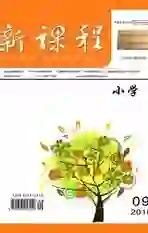基于文本,创设语篇教学的主线
2016-05-14�B
� B
背景介绍
《义务教育英语课程标准》明确指出一切教学活动的宗旨都是为发展学生的英语语言综合运用能力而服务的。语篇教学的最终目的就是帮助学生树立语篇意识,培养学生语言综合运用能力。语篇意识是一种意识,应渗透于教学的各个环节中。我们知道,无论是否有语篇意识的课堂都不外乎“复习热身—新课呈现—巩固操练—拓展延伸”这几个教学环节。但是语篇意识下的课堂教学可以通过两条线推进教学过程,一条是明线(语境的发展),一条是暗线(语言支架的构建)。语言学习最重要的是学生如何通过有意义的语言构建,内化为综合语言的运用能力。
语篇教学对于训练学生的听、说、读、写非常有利,也是学生获得知识并能运用知识的重要途径。我们发现小学语篇教学对高年级学生的学习越来越重要,因为牛津小学英语课本中的语篇较长,内容也较复杂,通常情况下,一个语篇中常常包含一些新的单词、常用句型以及相应的背景文化。在这一情形下,如果老师不能很好地指引学生学习,他们就不能吃透语篇的内容,更有甚者会从此畏惧语篇学习,从而导致英语学习能力下降。
教学实录及案例分析
Teaching procedures教学过程
Step 1 Greeting &Warm-up
T: Boys and girls, you know after the YOG our city Nanjing is becoming more and more clean and beautiful, right?
S:Yes.
T:Do you like it?
S:Yes.
T:Right. We all like such a city. So we need to go on keeping our city clean. Do you have any good ways ? For me, I go to school by bus every day. What do you do to make our city clean?
S:I walk.../ride.../ put.../plant.../clean...
T:Youre really good citizens, I think. Also we are the citizens of the world. Here Im going to show you a map of the world, actually its a picture of the earth. Do you know “earth”? Follow me.
T:We all live on this blue earth. Do you know whats on the earth? Can you find any resources(资源) on the earth?
S:Water/Coal/Oil/Gas/Trees...
T:Good, you really know a lot.
分析:以此激活学生已有知识储备,建立新旧知识的链接点。小学英语语篇教学应该是有目标、有计划、有步骤的行为,这要求我们将语篇教学内容优化组合,由浅入深,循序渐进,指引和帮助学生对已有相关英语知识进行有效回忆,根据知识间的内在联系寻找新旧知识的链接点。这样就能激活学生已有的知识储备,并把知识纳入新的语言学习中去,使学生易于进入主动学习的状态。
Step 2 Review
1. Watch and choose
T: This time I will show you four pictures on the earth. What can you see in these pictures?
S: I can see...
T: Yes, we can see many things. Can you guess what the passage is about according to pictures?
S: Its about...
T: Good guessing. Lets check whether youre right or not after watching the story. Please try to tell me the best title of this story.(播放课文动画说出课题)
S: Protect the earth.
T: Thats it. Follow me, protect the earth.(揭题并带读) How can we protect the earth?
S1: We can save water.
S2: We can save energy.
S3: We can save trees.
S4: We should not use too much plastic.
T: Good job. We should save water, save energy, save trees, but shouldnt use too much plastic. What can we use them to do?
分析:理清思路帮助学生把新知识纳入或同化到原有的知识结构中。文本主线具有重点突出、层次分明、联想丰富的特点。语境的形成需要一定的情境,而情境的形成又在一定程度上依赖于语言本身。我们应根据不同语篇内容创设不同的语境,如情景语境、情感语境和文化语境等。语境的创设应从学生的年龄和兴趣爱好入手,挖掘教材与生活的契合点,贴近学生的学习、生活。
2. Read and work in four
T: Great!I think you know four aspects very well. So this time each group you may read the passage again and think how to protect the earth. Please finish the worksheet in group of four.(自读课文小组合作完成学习表格)T: You can use sentence pattern “We use ... to...”to talk about it with your partner. After that lets check together.
分析:根据课文内容,完成表格信息框架,整理出课文脉络要求学生再读语篇,捕捉信息,尝试完成表格。独立探索,设置自主探究型任务,也是点燃学生学习语篇的兴奋点。探索开始时教师启发引导,学生自己分析;探索过程中教师要适时提示,帮助学生沿概念框架逐步攀升。起初的引导、帮助可以多一些,以后逐渐减少,愈来愈多地放手让学生自己探索,最后要争取做到无需教师引导,学生自己能在概念框架中继续攀升。学生在自主探究的过程中体验到成功的快乐,会愈加兴奋地投入到接下来的语篇学习。
T: Lets talk about them one by one. Which group would like to have a try the first one water? (逐一反馈短文信息)
S: We use water to... We should ... We shouldnt...
T: Good. You know water is useful from the book. What else do we use water for?
S: We use water to take a bath/make electricity/water flowers...
T: Yes. So we should save and reuse water but dont waste. Here waste is the opposite word of ...? It means...(出示中文意思并板书)
S: Save.
T: Good . You got it. How about energy?
S: We use energy to... We should ... We shouldnt...
T: Could you tell me the reason why we shouldnt drive too much?
S: Because theres not much... and cars use a lot of energy and make air dirty.
T: Right. What do we use trees to do?
S: We use trees to... We should ... We shouldnt...
T: Right. And trees are very important for our air so we should save them and plant more trees. How about plastic? Its useful and convenient in our life. Should we use it too much?
S: We use plastic to... We should ... We shouldnt.
T: Why shouldnt we use too much plastic?
S: Because its bad for...
T: Yes. So we should save water, energy and wood ,but dont use too much plastic. This is how we do to protect the earth.
分析:在英语语篇阅读中运用思维导图主要体现在整体感知阅读材料、整体理解阅读材料、理解阅读材料的语言知识和复述、背诵阅读材料等环节。本环节主要是围绕how to Protect the earth如何保护地球展开。地球是人类的家园,她给人类提供了生存的空间和资源,使人类得以生息繁衍。现在,全球面临资源短缺、环境污染、生态破坏这三大危机,作为地球公民,师生有责任就“保护地球”这一话题进行讨论。通过本节课的教学与渗透,联系生活实际,引导学生热爱地球、保护地球。教师引导学生借助围绕课文中提到的四个方面来合理保护地球,提炼出文章的主体脉络,就可以使描述性文字通过层次清晰的线条和色彩变得不再枯燥,有效降低学生阅读理解的困难。课文语篇教学按照从总到分,再从分到总的模式,层层剖析,理清课文脉络。运用思维导图能极大地提高阅读教学的有效性。
Step 3 Culture time
T: Today we talk about how to protect the earth. People around the world also do many things to protect the earth.(播放环境保护的手抄报等图片)T: Look at Mike, Liu Tao and Yang Ling, they are making a poster and talking about earth ,too. Listen,what are they saying?
S: They are talking about Earth Day and World Environment Day.
T: When are they? Read the sentences and tell me.
S: Earth Day is on ...and World Environment Day is on...
T: Yes. What can we do on each day? Lets take a look at the video and know more information about what we can do to protect earth.
分析:新课标凸显了的英语课程的人文性,格外关注学生的人文素养。因此,我们要在充分提炼文本内涵的基础上,积极、系统地建构人文浸润的有效途径。在环境保护这个全球关注的大背景下,在课堂上,教师通过言语的熏陶、任务的浸透,通过有关浪费和滥用自然资源和白色污染等方面的图片,给予学生讨论和分享,最后进行海报的亲手制作,再通过板书的提炼和升华,无痕地实施了“科学人生观”的浸润,倡导大家关心地球、保护地球,从而在“无声”的“润物”过程中丰厚学生的人文素养,促进其精神世界的和谐发展。
小学英语语篇教学中的文章结构是教师在语篇意识的主导下,在教学中通过铺设关键词、关键句的方式,由易到难、层层铺垫;各层次之间应过渡自然、逻辑严密。教学中以主要的语言点为主干,带动旧知等相关语言的滚动运用,逐步形成丰满的树状形支架,促进学生良好的英语思维品质的形成。
参考文献:
[1]陈惠娇.基于语篇意识的文本再构在小学英语语篇教学中的运用[J].中小学外语教学(小学篇),2013(4).
[2]王敏.小学英语教学中运用语篇意识进行词汇教学的尝试和思考[J].浙江教育研究,2010(6).
